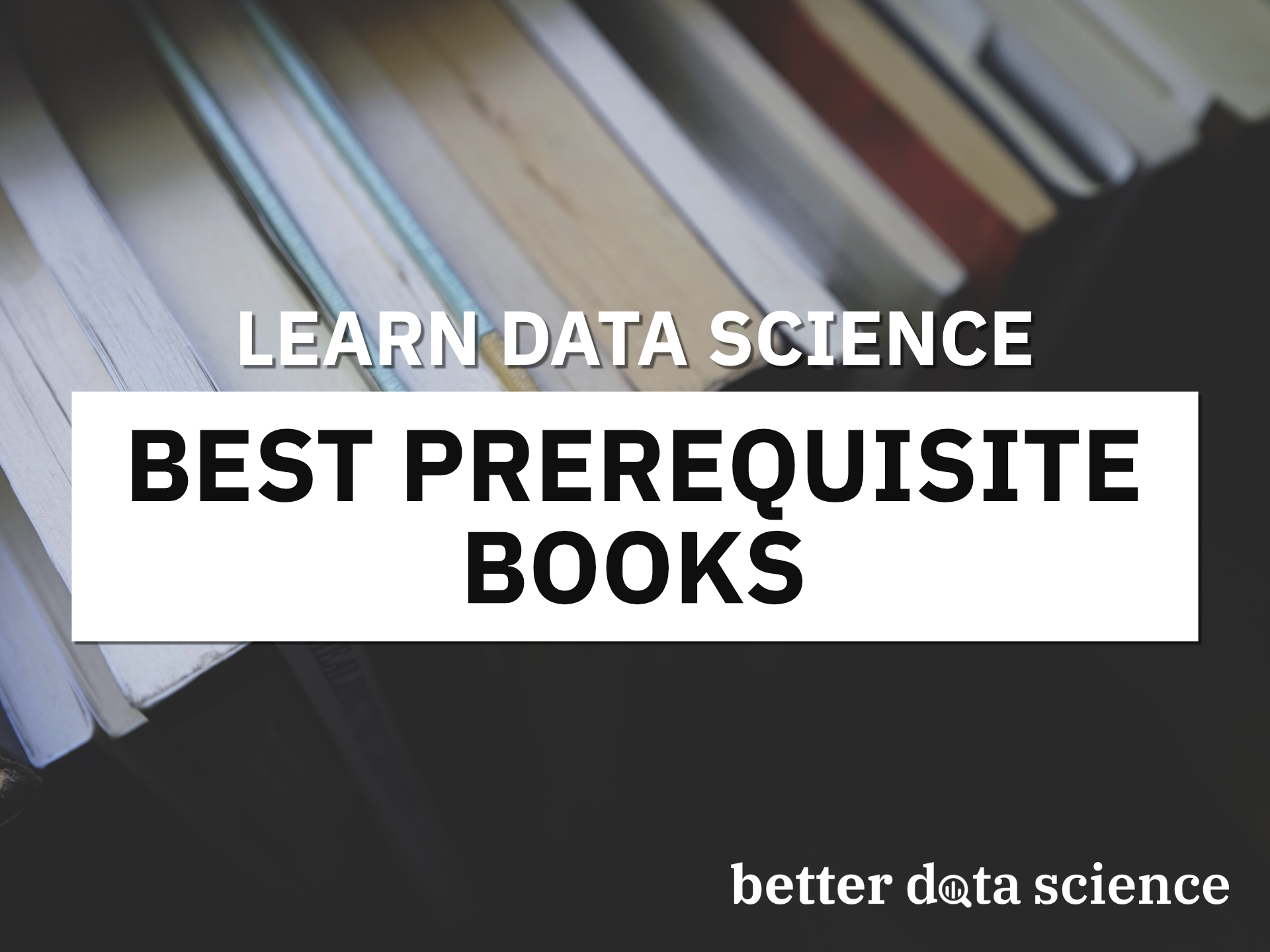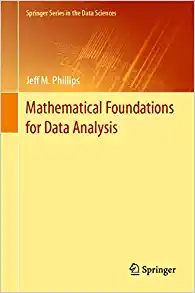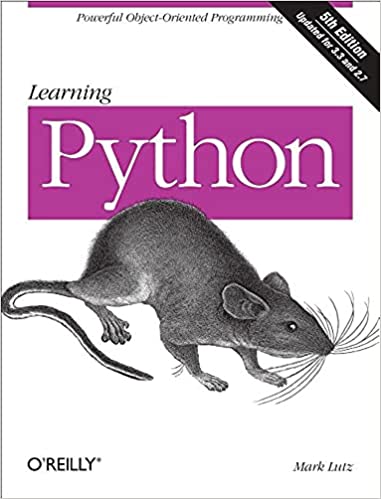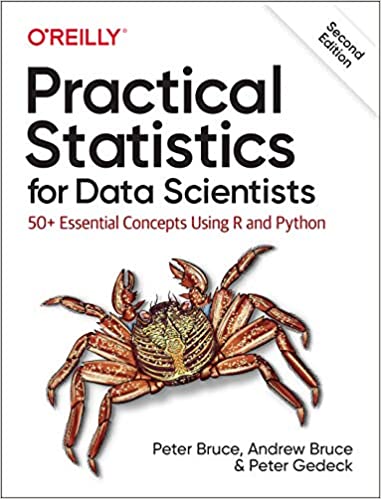Do you want to learn data science? It’s a great field to get into, and there are plenty of resources to help you get started. But where should you start? Which books can teach you the fundamentals of data science? In this blog post, we’ll recommend five books that will help beginners learn data science prerequisites.
These books will teach you essential topics like math, statistics, Python programming, and databases. So if you’re just getting started with data science, these books are a great place to start!
Disclaimer: The article contains affiliate links to our top recommended books. That doesn’t mean anything to you, as the price is identical, but we’ll get a small commission if you decide to make a purchase.
Head First Statistics - Best Prerequisite Statistics Book for Data Scientists
Head First Statistics
A Brain-Friendly Guide to Statistics and Probability
A statistics book that made histograms, probability distributions, and chi square analysis more enjoyable than going to the dentist?
Buy Now on AmazonHead First Statistics isn’t a book you usually won’t see in university courses - mostly because it’s full of visualizations and explanations in plain English. Most other books on the subjects are the exact opposite - full of formulas, proofs, and sentences you can’t understand.
This book is an excellent primer for more advanced topics. It’s targeted to complete beginners or people who’ve taken statistics courses before but haven’t used it in years.
You’ll learn everything from basic data visualization, measures of central tendency, probability, permutations, combinations, distribution, sampling, confidence intervals, to regression analysis - and you’ll learn it really, really well.
It’s a 700-page book, so expect to invest around 1-2 months - depending on your previous knowledge and the amount of time you can spare.
You can learn more about the book on Amazon.
Mathematical Foundations for Data Analysis - Best Mathematics Prerequisite Book for Data Science
Mathematical Foundations for Data Analysis
Basic math principles and techniques needed for modern data analysis
This book was designed and written as preparation for students planning to take rigorous Machine Learning and Data Mining courses
Buy Now on AmazonMathematics plays a huge role in data science and machine learning. Like it or not, there’s no way around it. Beginner data scientists should be proficient with basic math used in the field, and understand why some concepts work the way they do.
That’s where Mathematical Foundations for Data Analysis comes in. It provides an overview of basic principles and techniques used by data analysts and scientists without too much technical jargon. The book is targeted to students who plan to take rigorous machine learning and data science courses.
You’ll learn the basics of linear algebra, logic and intuition of distance-based algorithms, regression, classification, gradient descent as an optimization algorithm, methods to reduce dimensionality, clustering, and much more.
The book comes just below 300 pages, so it shouldn’t take you months to go through it.
You can learn more about the book on Amazon.
Learning SQL - Database and SQL Fundamentals for Data Scientists
Learning SQL
Generate, Manipulate, and Retrieve Data
Get up to speed with SQL fundamentals for writing database applications, performing administrative tasks, and generating reports.
Buy Now on AmazonDatabases and SQL are often overlooked by upcoming data scientists, mostly because they’re seen as archaic technologies. That couldn’t be further from the truth. There’s no data science without data, and there’s no place better to handle data than databases.
Learning SQL is an excellent place to start. It gives you detailed explanations and hands-on exercises on databases, queries, and different SQL operations - such as filtering, data manipulation, grouping, aggregation, joins, conditionals, transactions, and much more.
The book is around 350 pages long but you’ll go over it in no time. After all, SQL is easy to learn and understand, as its syntax is really close to your everyday English.
You can learn more about the book on Amazon.
Learning Python - Essential Prerequisite Programming Book for Data Science
Learning Python
Write efficient, high-quality code with Python
Get a comprehensive, in-depth introduction to the core Python language with this hands-on book.
Buy Now on AmazonPython is the most popular programming language for data science and machine learning. Most companies use it, so you should learn it, and learn it really well. You can’t get all the necessary knowledge from a single book. That only comes with experience.
Still, the 5th edition of Learning Python is likely the best Python programming book out there. It will teach you how to write efficient and high-quality code, and is aimed towards complete beginners and developers experienced in other languages.
It’s over a thousand pages long, so expect to invest a couple of months into the book, especially if you plan to do all quizzes and exercises. There’s no point in telling you what the book covers, as it covers everything. You’ll get a comprehensive overview of the Python programming language as the most important prerequisite for data science.
You can learn more about the book on Amazon.
Practical Statistics for Data Scientists - Prerequisite Theory + Code in Python
Practical Statistics for Data Scientists
50+ Essential Concepts Using R and Python
A comprehensive and practical reference book that bridges the gap between practical and theoretical statistical concepts.
Buy Now on AmazonStatistics again? Yes, but this time with Python. Practical Statistics for Data Scientists doesn’t go into too much depth, but you’ll still get a recap on EDA, random sampling, regression, classification, and much more.
The best part? It’s completely hands-on and has all sections implemented in Python. That way, you’re practicing both statistics and programming skills. You’ll learn a couple of data science libraries along the way.
There are around 330 pages to read and a lot of code to write and experiment with. However, I can’t recommend it as the first-ever exposure to probability and statistics, as it assumes you’re already familiar with the concepts.
You can learn more about the book on Amazon.
Summary
To conclude, you need to know statistics, probability, math, programming, and databases to get started in data science and learn more sophisticated libraries. Yes, it’s a lot, but nothing you can’t manage to do in 6-12 months. How long will it take depends on your prior knowledge and the amount of time available.
One way or another, you’ve got this.






